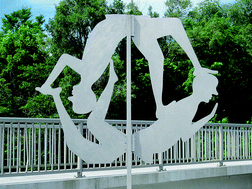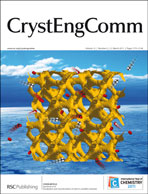Losing control? “Design” of crystalline organic and metal–organic networks using conformationally flexible building blocks
Abstract
Controlling the manner in which organic compounds and metal–organic frameworks assemble in the solid state is an attractive strategy for construction of new functional materials. Most crystal engineering studies employ geometrically well-defined and rigid molecular building blocks in order to limit modes of intermolecular association to only a few (ideally predictable) pathways. Although sacrificing a measure of control, the use of conformationally flexible molecules may provide unique opportunities to construct novel crystalline architectures exhibiting desirable attributes, such as dynamic solid state properties. In this Highlight some of the potential advantages and disadvantages encountered when using flexible components in crystal engineering are discussed. Purely organic systems as well as metal–organic constructs derived from conformationally mobile precursors are described in an effort to demonstrate the impact of molecular flexibility on solid state structure in a range of applications.


 Please wait while we load your content...
Please wait while we load your content...